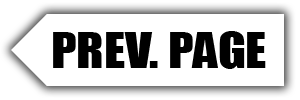
Formidable looking 427 SOHC Ford had no pushrods, greater rpm capability than 392 or 426 Hemi’s of mid-1960’s. Pete ran higher static compression and lower nitro percentage with very low (high numerical” rear axle gears, to get out front first, letting extended rpm of ‘Cammer take him to the finish line first.
(The 392 and 426 Hemi engines initially utilized cast iron blocks and heads. Chrysler later released aluminum heads for the 426. In 1971 California machinist and racer Ed Donovan launched his 392-based, Donovan 417 aluminum engine and heads. The Donovan 417 was a major improvement. However, the Donovan was merely a holdover. By the end of the ‘70s the 392 and the 417 engines were gone, replaced by aluminum clones.)
Pete worked carefully through the 1965 season, first identifying and then solving the 427 SOHC Ford’s oil system weaknesses. They were notorious for killing rod and main bearings, eerily similar to the problems Pete experienced with the Fairlane. The solution came from the drag racing aftermarket. Curiously, the 426 Hemi was experiencing similar issues. Milodon Products and engine builder Keith Black both responded with 426 Hemi oil systems for blown-nitro racing. These greatly increased oil capacity, volume and pressure. Large, steel braided, external oil lines were plumbed into baffled oil pans.
Crankshafts were machined for larger main and rod bearings and forged aluminum rods were used as an alternative to the forged steel OE rods.
Cross-breeding the proven 426 Hemi oil systems to the 427 SOHC Ford proved an effective solution. Reliability problems now resolved, both Pete and Kalitta busied themselves with increasing the power these engines promised to deliver.
Pete had opened 1965 with an early Top Gas runner-up to Gordon Collett, his final Top Gas event. He wrapped up the 1965 season by winning Top Fuel at the Atlanta $10,000 Meet at Covington, Georgia’s Newton County Dragway. Pete had been a regular there since his ’40 Ford days and had a hand in promoting the inaugural 1964 $10,000 Meet event with Atlanta speed shop owner Julius Hughes. It was the South’s first big-money Top Fuel race. Hughes was a long-time friend of Pete and Bill Word and a racer himself. The event attracted a strong field of cars and a few touring California pros. Pete’s final-round victim in ’65 was the late Jimmy Nix, “The Smilin’ Okie”. Next year, 1966, Nix claimed the Top Fuel win over Pete.


